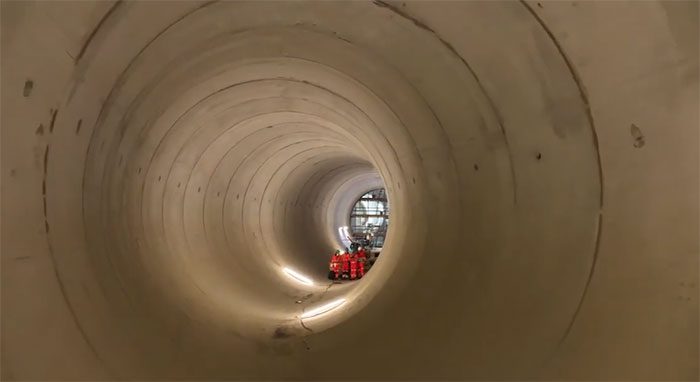A massive concrete pipe with a capacity of 1.6 million m3 is currently being constructed beneath London to reduce the frequency of wastewater discharge into the River Thames.
The new super sewer in London, a giant concrete pipeline stretching 25 kilometers along the River Thames, is designed to tackle an issue that the capital of the UK and many other cities have struggled with for decades: the discharge of untreated wastewater into waterways, as reported by New Scientist on June 2.
The current sewer system in London is cracking at many joints. This system was built around 1859 – 1875 following the disaster known as the “Great Stink” of 1858. At that time, the city’s population was about 3 million people. Engineer Joseph Bazalgette designed the sewer system to handle wastewater from 4.5 million people along with rainwater. Today, approximately 9 million people use this system. Increasingly wet weather and higher levels of urbanization in London have prevented the ground from absorbing rainwater.
The old system cannot cope with the current situation and is overwhelmed about 60 times a year, discharging a total of 50 million tons of raw sewage annually into the River Thames, along with wet wipes, sanitary products, condoms, and anything else flushed down the toilet.
“Our mission is to build a sewer to address that issue,” said Andy Mitchell, CEO of Tideway, the company behind the project. Their solution is to construct a massive pipe deep underground, beneath the Victorian sewer, to intercept overflow. The Tideway Tunnel is one of the largest urban sewer projects in the world, according to Mitchell. While the project does not completely solve the problem—during heavy rainfall, some sewage will still flow into the river—it will reduce the frequency of overflow to about 3-4 times a year, with the majority of overflow being rainwater.

The total capacity of the tunnel is 1.6 million m3.
The tunnel entrance is a concrete shaft with a diameter equivalent to that of a cooling tower and a depth of 50 meters. It needs to be this large to accommodate the enormous boring machines. Engineers are lowered progressively through a concrete frame attached to a crane. The circular tunnel has a diameter of 7.2 meters, took 8 years to build, and cost $5.6 billion. The tunnel’s total capacity is 1.6 million m3. The project is set to become operational next year.
The tunnel slopes gradually from west to east, allowing wastewater to flow by gravity without the need for pumping. When the wastewater reaches its destination at the Beckton treatment plant, it is located 80 meters underground and needs to be pumped up. In about a year, the tunnel will be completed. The lights will be removed, the entrance sealed off, and the tunnel will remain in darkness for at least 120 years. Maintenance inspections will be conducted using drones.


















































